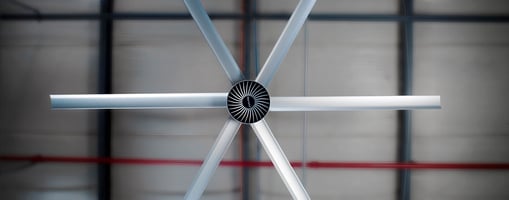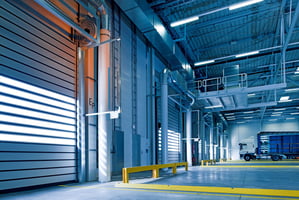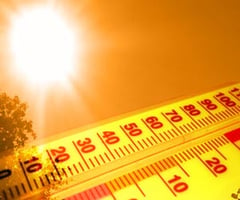Constant movement and running machinery with lots of people are common scenes in warehouses. With...
The 5 Most Common Questions About How HVLS Fans Reduce Energy Costs
One of the top benefits of HVLS fans is their impact on energy costs. The right fan in the right space can lead to significant reductions in a facility's monthly energy bill. But many people have questions about how exactly an HVLS fan impacts their energy bill. If you've been wondering how HVLS fans reduce energy costs, read on.
The 5 Most Common Questions About How HVLS Fans Reduce Energy Costs
1. How much of a reduction in cooling costs can I expect?
It's difficult to provide a specific number for the amount of savings you'll reap with an HVLS fan because there are many different types of fans and spaces they can be installed in. However, data collected from the American Society of Heating, Refrigeration and Air Conditioning Engineers (ASHRAE) shows that some facilities have saved as much as 49% with HVLS fans. Another good way to estimate your potential savings is by reviewing HVLS case studies for facilities that are similar to yours.
2. How much of a reduction can I expect in heating costs?
Again, it's hard to put an exact number on the amount of money you'll save each month with an HVLS fan. When it comes to heating, an HVLS fan helps a facility by preventing heat from rising up to the ceiling and escaping. Research shows that HVLS fans can save you 20% or more on heating costs by spreading warm air more efficiently.
3. How do I keep a warehouse well heated well in the winter?
Besides running your HVAC system at a higher setting, there are two ways to ensure a warehouse stays heated at the proper level:
- Lower the amount of building leaks that allow heat to escape, and
- Improve the circulation of heat from the HVAC system.
HVLS fans can help with both of these methods because they keep warm air moving around your space. This means the warm air stays in the space rather than immediately rising and escaping from leaks in the building's roof and walls.
4. How does HVLS technology integrate with HVAC for reduced energy costs?
An HVLS fan complements an HVAC system by making the system more efficient. Because an HVLS fan improves a facility's airflow, it means that the hot and cold air produced by the HVAC system has a further reach. This can dramatically improve the heating or cooling in a building. In the hotter months of summer, an HVLS fan used in conjunction with an HVAC system can make a building feel as much as 8 degrees cooler.
5. How does HVLS work in a facility without HVAC?
HVLS fans keep a facility without an HVAC system cool by circulating air. When air flows around a space, it creates a breeze that makes the people in the area feel cooler. This lowers the "effective" temperature of a building by as much as 8 degrees, which is important to help keep the occupants comfortable in a facility with no HVAC.
The Bottom Line
Purchasing an HVLS fan for your facility is a big decision. One of the best ways to get your questions answered is by speaking with a sales representative or distributor. They will be able to assess your particular needs and find an HVLS cooling solution that offers maximum effectiveness and return on investment.



